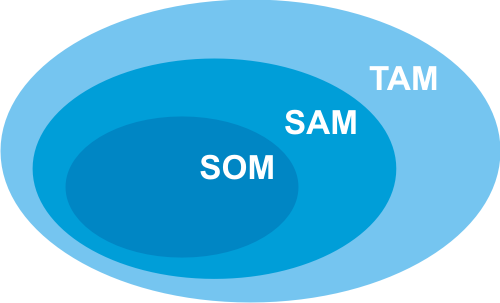Articles Description
Introduction: Why Feedback is Critical for Startups
In the fast-paced world of startups, the ability to learn and adapt quickly is often what separates successful ventures from those that fail. A crucial part of this adaptive process is the feedback loop, a continuous cycle of gathering, analyzing, and applying feedback from users or stakeholders to improve your product or service. Whether you are at the ideation stage or refining an existing product, incorporating feedback is key to ensuring your solution meets real user needs and evolves over time.
In this article, we’ll explore how startups can use feedback loops effectively to iterate their way toward a better product. We’ll cover why feedback is important, how to gather meaningful insights, and how to apply those insights to improve your product offering.
What is a Feedback Loop?
A feedback loop is a process where input (feedback) is gathered from users, analyzed to find patterns and insights, and then applied to improve a product, service, or idea. After making changes based on this feedback, you repeat the process to continuously refine and enhance your offering.
At its core, the feedback loop consists of four main steps:
-
Collect Feedback: Actively gather information from users about their experiences, challenges, and desires.
-
Analyze Feedback: Sort through the data to identify common themes and actionable insights.
-
Implement Changes: Apply the insights to modify and improve your product or service.
-
Test and Refine: Test the updated product, gather feedback again, and continue iterating.
Why Feedback Loops Matter for Startups
-
Customer-Centric Development: Startups often operate with limited resources, which makes it critical to focus on building solutions that genuinely solve customer problems. Feedback loops help you stay customer-focused by continuously integrating user needs into your product development process.
-
Fail Fast, Learn Faster: In the early stages, your ideas and assumptions about what users want may be untested. By actively seeking feedback and iterating quickly, you can validate or invalidate assumptions, allowing you to pivot or adjust before investing significant resources.
-
Reduced Risk: The risk of building a product nobody wants is real. Feedback loops help mitigate this by ensuring you are constantly aligning your product with market demands and user expectations.
-
Continuous Improvement: Even after launching a product, the market, competition, and user expectations evolve. A feedback loop ensures your product stays relevant and competitive by incorporating continuous improvements based on real-time insights.
Step 1: Collecting Meaningful Feedback
To get the most value from a feedback loop, you need to gather feedback that is meaningful, actionable, and relevant. Here’s how to collect useful insights:
-
Surveys and Questionnaires: Use surveys to ask targeted questions about the user experience, product features, and overall satisfaction. Keep questions open-ended to gather detailed responses.
-
Customer Interviews: Speak directly with users to gain qualitative insights. This allows you to dig deeper into their motivations, frustrations, and preferences.
-
Usability Testing: Have users interact with your product while you observe. This can highlight usability issues and areas of confusion that you may not have anticipated.
-
Analytics Tools: Use tools like Google Analytics, Mixpanel, or Amplitude to track user behavior. Metrics such as bounce rates, conversion rates, and engagement times can provide indirect feedback on how users are interacting with your product.
-
Social Media Listening: Monitor social media channels to see what users are saying about your product, competitors, or the industry. This informal feedback can help you spot trends and emerging customer needs.
Step 2: Analyzing Feedback for Actionable Insights
Once feedback has been collected, the next step is to analyze it and turn it into actionable insights. Here are a few ways to make sense of the feedback:
-
Look for Patterns: Sort feedback by common themes or recurring issues. For example, if multiple users mention that a certain feature is confusing or unnecessary, that’s a clear signal to consider making changes.
-
Prioritize Based on Impact: Not all feedback should result in immediate action. Use an Impact vs. Effort matrix to decide which feedback should be addressed first. Focus on changes that will have a high impact with low effort to maximize your resources.
-
Segment Your Audience: Different user segments may have different needs. Make sure to analyze feedback in context. For example, the feedback from power users may differ from that of new users. Prioritizing based on the user segment can help you refine your product for specific audiences.
-
Quantitative vs. Qualitative Feedback: While quantitative data (e.g., click-through rates, time spent on a page) can give you an overview of behavior, qualitative feedback (e.g., user comments) provides deeper context. Combining both helps create a fuller picture.
Step 3: Implementing Changes
Once you have identified areas for improvement, it’s time to implement changes. Here are a few tips to ensure the implementation process is effective:
-
Create a Plan: Before making any changes, outline a clear plan of what features or elements will be updated and how these changes align with your overall product vision.
-
Test Small, Iterate Fast: Implement small changes first and test them with users. This allows you to validate each improvement before moving on to larger iterations. This is a key principle of agile development, where progress is made in small, manageable increments.
-
Communicate with Users: Let users know that their feedback is being heard and acted upon. This not only helps build a loyal user base but also encourages more users to provide feedback in the future.
Step 4: Testing and Refining
After changes are implemented, you should continue the feedback loop by testing the updated product and gathering new feedback. Here’s how to approach this phase:
-
Beta Testing: If your updates are significant, consider releasing them to a small group of beta testers before a full-scale launch. This allows you to catch any issues early and gather focused feedback.
-
Track Key Metrics: Use analytics tools to track how users interact with the updated product. Are they engaging more or less? Are conversions improving? Look for measurable improvements.
-
Collect More Feedback: After users have had time to interact with the updated product, gather another round of feedback. This will help you understand if the changes had the intended impact and what else needs refinement.
-
Repeat the Process: Continue iterating. Product development is an ongoing process, and a good feedback loop allows you to make incremental improvements over time.
Case Study: How Dropbox Used a Feedback Loop to Build a Billion-Dollar Business
In its early stages, Dropbox used a simple explainer video to gather feedback and validate its idea before building a full product. By using this early feedback, they avoided investing resources into building something nobody wanted. As the product grew, Dropbox continued to use feedback loops through beta testing, user interviews, and metrics analysis to improve its product and scale rapidly.
Their ability to test, learn, and iterate quickly made Dropbox one of the fastest-growing startups of its time.
Conclusion: Making Feedback Loops a Habit
For startups, the feedback loop is a critical tool for learning, iterating, and improving. By continuously gathering and applying feedback, you ensure that your product remains aligned with user needs and can adapt to changes in the market.
The key is to make feedback loops a regular part of your process—not a one-time event. With each iteration, your product will become more refined, more useful, and more aligned with the needs of your target audience. As you move forward in your startup journey, keep listening, keep learning, and keep iterating.
Actionable Takeaways:
-
Start collecting feedback as early as possible, even before you have a fully developed product.
-
Focus on actionable insights and prioritize changes that will have the biggest impact on your users.
-
Test changes iteratively and gather feedback after each round of updates.
-
Make feedback loops a core part of your product development process.
By mastering the feedback loop, you’ll build a product that evolves alongside your users’ needs and keeps you ahead of the competition.

 Madarek Article
Madarek Article

















